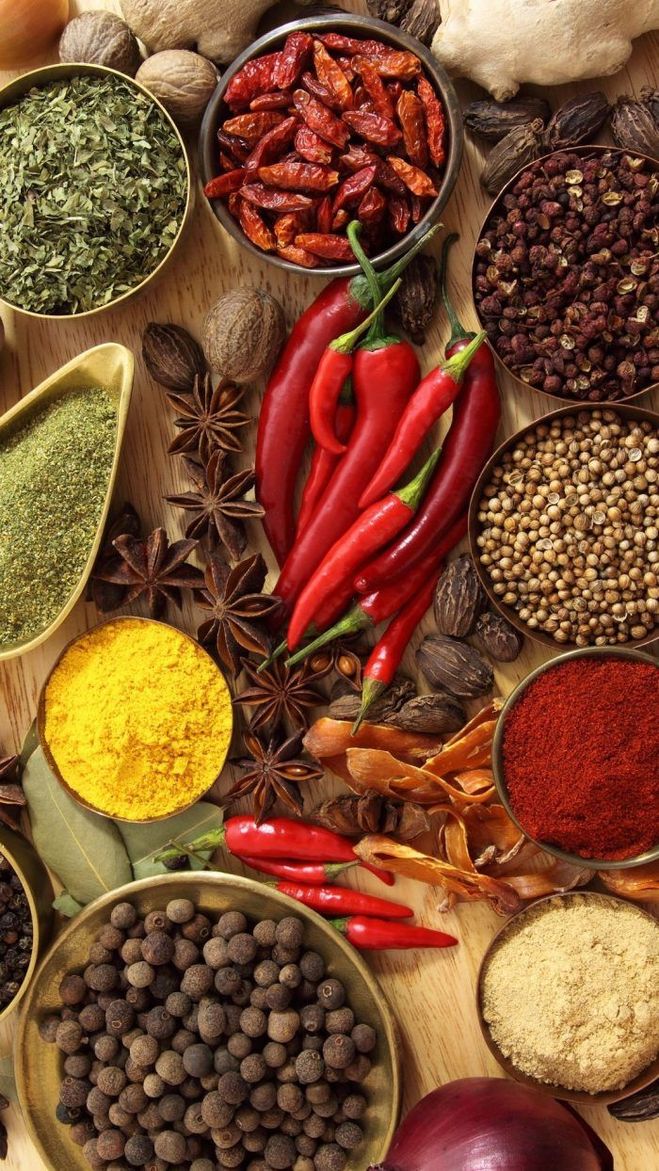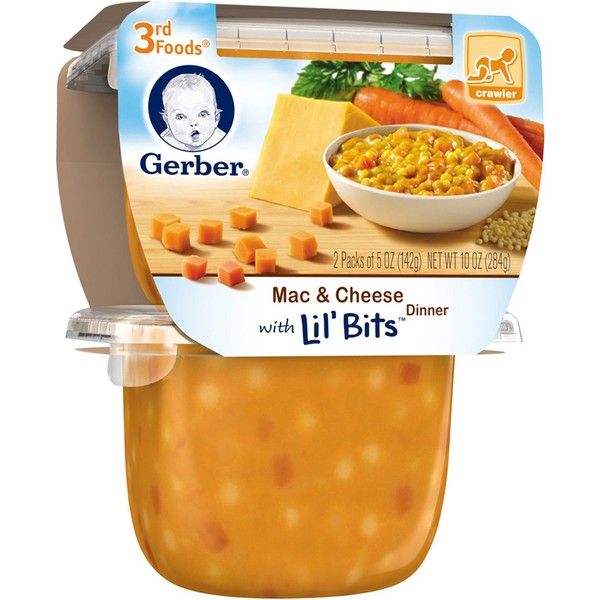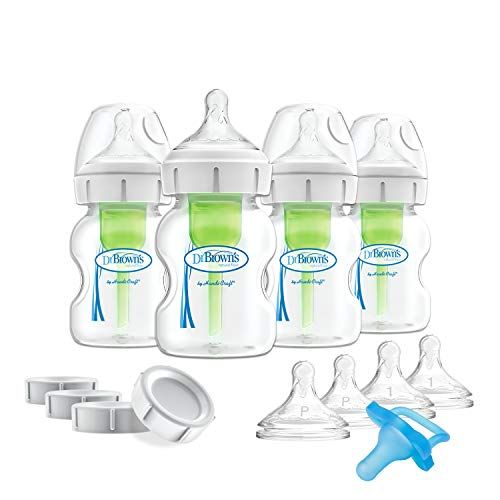Spices and baby food
Adding Spices and Herbs to Baby Food
All Posts, by Date » Learn » Adding Spices and Herbs to Baby Food
Baby food doesn’t have to be bland, liven up your babies’ food and expand their palates by experimenting with a range of spices and herbs. Increasing babies’ taste buds in this way helps to cultivate adventurous and healthy little foodies.
Herbs and spices provide our foods with a multitude of flavours, fragrances, and colours. However, many parents worry about adding flavour this way to their babies’ food, believing that spices are hot and not suitable for little ones’ taste buds.
There is a big difference, however, between hot spices and aromatic ones. Aromatic spices, along with a range of different herbs, are perfect for adding to baby food.
This guide explains when to start adding spices and herbs, the benefits of adding them and gives some ideas on how to start introducing them to your baby.
I always encourage parents who are just starting weaning their babies, either by purees or baby-led, to experiment with herbs and spices from the beginning. As salt and sugar should be avoided before one, adding a little spice and/or herbs is a great way to add flavour to baby food.
Breastfed babies are often introduced to a variety of spices even before starting solids. Breast milk can change its flavour, depending on a mum’s diet. If Mum enjoys spicy and flavoursome food, then her baby will be exposed to this through her milk, helping create and develop a taste for flavoured foods.
Benefits of Introducing Spices and Herbs at an Early Age- As salt should be limited in baby food, spices and herbs are a good way to flavour food.
- Allows babies to get used to a range of flavours at a time when they are willing to experiment with taste.

- Teaches babies to expect change with food.
- Helps babies transition to family food, as your baby will be familiar with those tastes and more likely to accept them.
- Provide certain health benefits. Read more here!
Begin with herbs and aromatic spices like cinnamon, turmeric, nutmeg, cardamom, cumin, coriander, clove, smoked paprika, mint, basil, dill and rosemary.
This is just a few ways to get you started spicing up your baby’s food…
CINNAMON – Cinnamon has warm, sweet and spicy notes and adds delicious flavour to sweet and savoury meals. Try adding it to apple puree, banana, sweet potato puree, fruit compote & yoghurt, muffins, porridge and stews.
SMOKED PAPRIKA – One of our favourites! Smoked paprika has a sweet rich smokey taste. Try adding to sweet potato, carrots, chicken, fish, lentils, paella, chilli and eggs.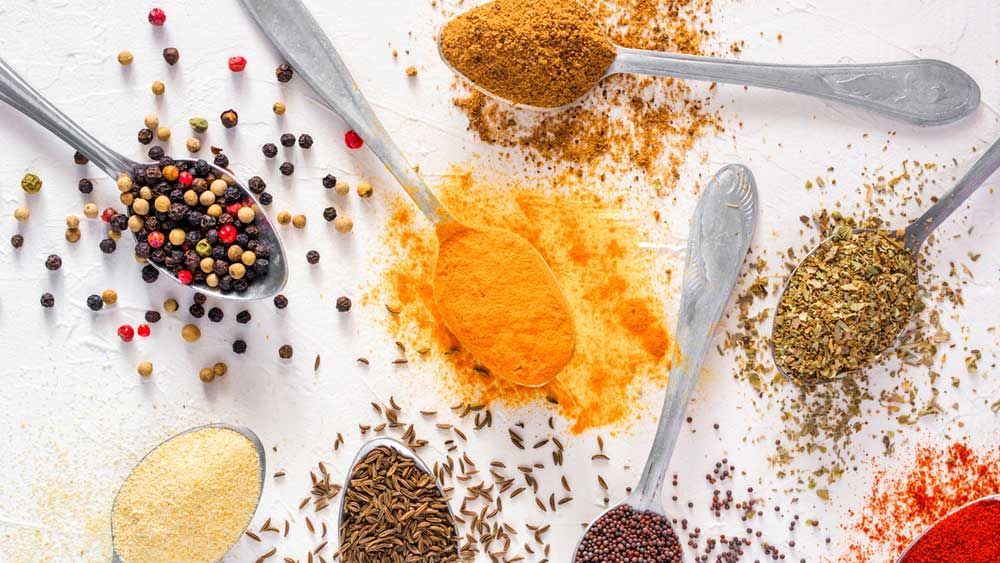
CARDAMOM – Green cardamom (our preferred choice) has a floral, minty, peppery taste and works well in both sweet and savoury dishes. Try adding it to pear puree, carrot puree, chicken, porridge, muffins, banana bread,
TURMERIC – Turmeric has a mild fragrance and warm slightly bitter notes. Try adding to lentils, eggs, porridge, cauliflower puree, curries and stews.
CUMIN – Cumin has a nutty, peppery, earthy flavour that pairs well with meats and vegetables. Try adding it to carrot puree, cauliflower puree, lamb, chicken, stews, curry and chilli.
NUTMEG – Nutmeg has a warming sweet and peppery flavour. It is lovely in sweet baking but also with creamy savoury dishes. Try adding it to muffins, stewed fruit, bechamel sauce and pasta bakes.
MINT – Mint is aromatic and fresh with a sweet cooling flavour. Great for adding to both sweet and savour purees, combines well with many vegetables such as new potatoes, tomatoes, carrots and peas and adds fresh flavour to fruits.
Great for adding to both sweet and savour purees, combines well with many vegetables such as new potatoes, tomatoes, carrots and peas and adds fresh flavour to fruits.
OREGANO – Oregano is very aromatic with slight earthy, green bitter notes, it is very popular in Mediterranean cooking. Try adding it to veggie purees, roasted vegetables, eggs, pasta sauces, or pizza.
ROSEMARY – Rosemary has a piney aroma and a distinctive sharp flavour. It is very strong and you only need a little. It gives a lovely flavour to purees, savoury dishes and even sweet baked goods. I love how it has been used in this roasted banana and rosemary puree.
BASIL – Basil has a light herbal bouquet that complements a wide variety of foods. Try it in baby purees, or puree it on its own for a fragrant, healthy sauce perfect for you and baby. It’s one of the primary ingredients in pesto – so why not try our Homemade Basil Pesto recipe for a delicious finger food dip for your little one
Tips for Using Spices and Herbs- Take Care of Your Spices – Store spices in airtight containers away from light and heat.
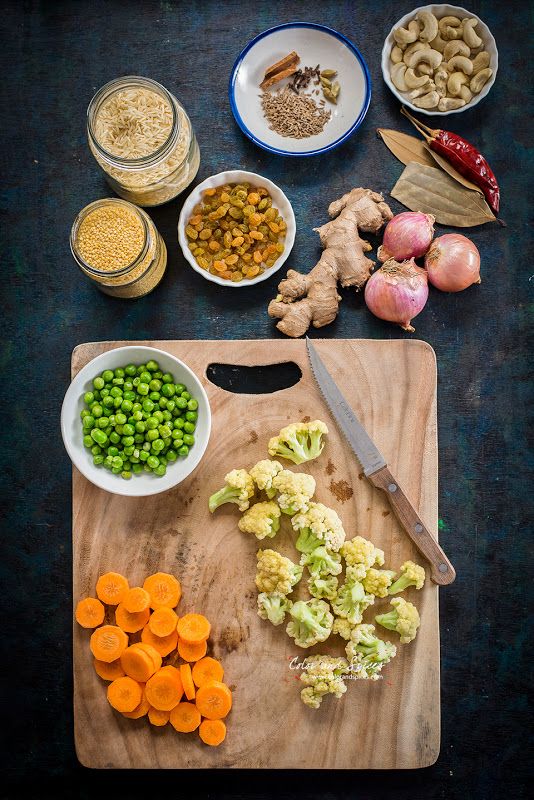 Whole spices will keep for around 1-2 years but after around six months, ground spices will start to lose their aroma and flavour. So buy in small amounts and use often!
Whole spices will keep for around 1-2 years but after around six months, ground spices will start to lose their aroma and flavour. So buy in small amounts and use often! - Dried herbs should also be stored in airtight containers in a cool, dark, and dry space.
- Spice Blends – Always read the packaging when using spice blends (as they often have added sugar and salt), try making your own blends.
- Start with small amounts – Use small amounts to start with to allow your baby to get used to different flavours. You don’t want to overpower the food. Start out by adding just a pinch.
- Prepare fresh leafy herbs properly – Wash fresh herbs and then puree or finely mince before adding to baby food.
- Don’t give up – if your baby rejects the flavour of the spices/herbs just remember that it can take up to 10-20 exposures for a new flavour to be accepted.
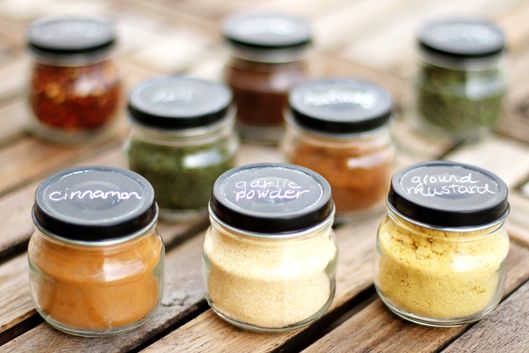
Recipes to Try
Spiced Meatballs
Lamb mince, spices & spinach are mixed together and then formed into balls to make theses deliciously spiced meatballs.
Check out this recipe
Cinnamon Apples
Apple wedges pan-fried in a little coconut oil and a good shake of cinnamon.
Check out this recipe
Sweet Potato Chickpea Curry
A deliciously spiced vegetarian curry, ideal for kids. The sweet potato adds a delicious sweetness that complements the spices perfectly.
Check out this recipe
Meet Amy
Amy Whiteford runs the blog Healthy Little Foodies. She is a mum to two, has a BSc (Hons) Food Science, PGDE Primary Education and a Certificate in Childhood Nutrition. She uses her experience and knowledge to create healthy and delicious recipes for kids. Explore the site for creative ideas, tips, and inspiration! Read more
Explore the site for creative ideas, tips, and inspiration! Read more
How to raise a Healthy Little Foodie
Receive family friendly recipes, delivered weekly to your inbox, for FREE! And receive this FREE ebook - "How to Raise a Healthy Little Foodie"
Reader Interactions
Baby food flavors: Using spices and seasoning in baby food
Baby food doesn't have to be bland – in fact, spices and seasonings are encouraged. The more variety, the better, to expand your baby's tastes. You don't have to make separate food for your baby – little ones can eat what the rest of the family is eating, as long it doesn't contain added sugars.
Many babies are ready for solid foods by the time they're around 6 months old, and parents often turn to such traditional first foods as infant cereals and other bland fare. Plain food isn't necessarily bad for babies, but too much of it can deprive them of important nutrients and may make them less likely to accept different textures and flavors.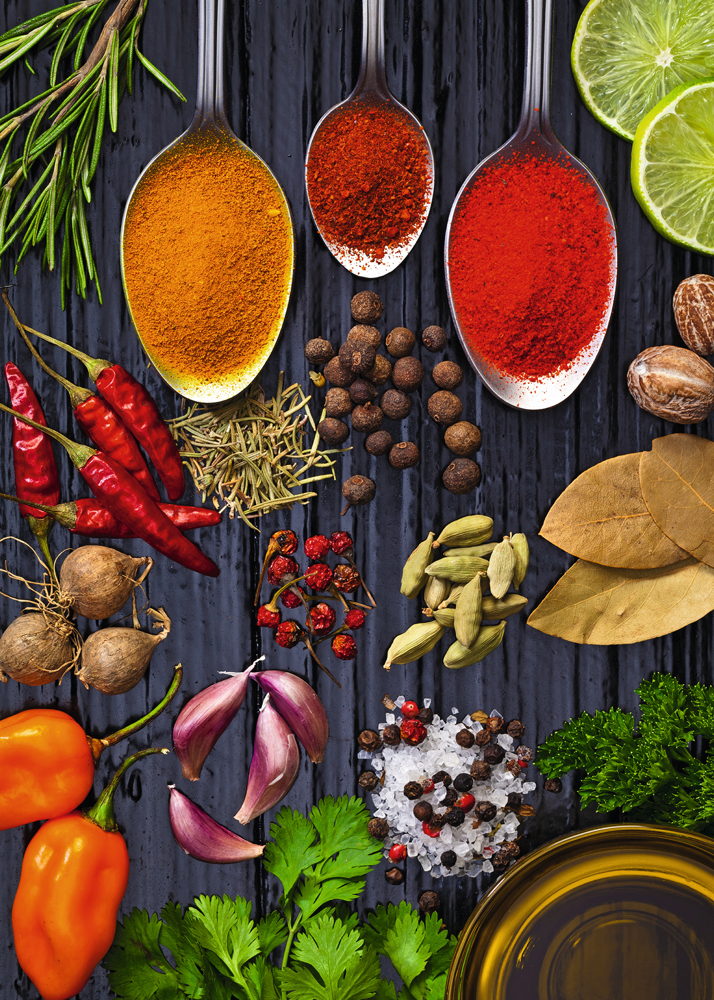 According to the American Academy of Pediatrics, it's important to offer your baby a variety of healthy foods.
According to the American Academy of Pediatrics, it's important to offer your baby a variety of healthy foods.
So how do you get your baby to eat a variety of food from an early age? Here's the latest thinking on how to raise an adventurous eater.
Use spices for baby food
While babies throughout the world are dining on complex, flavorful cuisine, many babies in the United States are gumming plain, tasteless mush. The reasons we continue to serve babies bland food are open to debate, but one thing is certain – they're not based on research. In other words, a culinary walk on the wild side won't hurt your baby in the slightest.
And breastfed babies have actually walked that way already: Breast milk takes on the flavors of the food the mother eats. So if you dine at your favorite Indian restaurant and then nurse, your baby will also enjoy the taste of an Indian meal.
So toss some rosemary in with that squash, liven up that chicken with a dash of cumin, and give those mashed potatoes a kick with a blend of paprika and parsley. You may be surprised by your baby's reaction.
You may be surprised by your baby's reaction.
Contrary to popular belief, you don't need to banish hot spices from the highchair tray either. Of course you'll want to steer clear of anything that could irritate your baby's skin or mouth (so no habaneros yet), but there's no harm in letting your baby try mildly or moderately spicy food. For example, milder chiles, such as Anaheims and poblanos, add flavor without causing pain. If anyone raises an eyebrow, just say that babies in other parts of the world thrive on spicy food.
Cooking with herbs and spices is a great way to expand your baby's palate, but skip the sugar (see next tip) and salt when preparing food for your little one. Not only are they unhealthy, but they can also lead to poor eating habits and health problems, such as obesity, diabetes, and heart disease in childhood and later in life.
Avoid added sugars
Sugars that exist naturally in foods, such as the fructose in an apple or the lactose in cheese, are fine. But watch out for added sugars. These are sugars or syrups added to foods or beverages when they are processed or prepared. These are products like corn syrup, dextrose, maltose, and sucrose.
But watch out for added sugars. These are sugars or syrups added to foods or beverages when they are processed or prepared. These are products like corn syrup, dextrose, maltose, and sucrose.
The U.S. Department of Agriculture and the Department of Health and Human Services recommend that children younger than 24 months not consume any added sugars.
You likely won't have problems with jarred baby food or whole-food purees you make at home. But as your little one moves on to finger foods, snacking, and eating what the family eats, be mindful that added sugars can be found in surprising places, such as in ketchup and soups.
Limit junk food
Everyone knows that junk food is unhealthy, but the negative effects can be much more serious for babies. (Unfortunately, some classic kid foods actually qualify as junk. See our list of the worst foods for babies.)
That's because even a very small serving of sugary or salty junk food is likely to make your baby feel full, leaving less room for healthier food with the nutrients necessary for brain growth and development.
Does this mean you're a bad parent if you let your little one sample a french fry or gnaw on a corner of your chocolate chip cookie once in a while? No – just don't make it a regular habit because it could encourage your baby to develop a taste for extra sugary or salty foods.
Give your little one homemade food for babies
and for grown-ups"Homemade baby food" sounds daunting, but it's surprisingly easy and doesn't require a nutrition degree, gourmet cooking skills, or fancy equipment. Making baby food can be as simple as mashing up a banana or avocado with a fork, squashing canned beans together with some garlic, or pureeing veggies steamed with spices.
And as long as you're making something healthy, your baby can eat the same food you do – no need to make separate meals! Just use a blender, food processor, or baby food maker to make food the right consistency for your baby.
Or forget the purees altogether and try baby-led weaning: Place large, soft chunks of food on the table or highchair tray and let your baby feed themself.
Make your own informed decisions about organics
"There's a lot of confusion when it comes to organics because there's no conclusive evidence that they're healthier than conventional foods," says dietitian and mom Jodi Greebel of New York. And there's conflicting evidence about whether pesticides and hormones in conventional foods are harmful.
"But the general feeling is that anything harmful will have a stronger effect on babies because of their small size – bad substances won't be as diluted as they are in an adult."
Some studies suggest a link between pesticide exposure and cancer as well as developmental problems in children, including attention deficit hyperactivity disorder and poor intellectual development. But the short-term and long-term effects of pesticide exposure are still poorly understood, and experts disagree on just how concerned parents should be. In deciding whether to feed your baby all, some, or no organic food, consider what works for your family and your budget.
The organic factor also matters more with some foods than others. For example, apples, spinach, and strawberries have the highest pesticide residue levels. On the other hand, sweet corn, cabbage, and avocados tend to have relatively low levels. The nonprofit Environmental Working Group ranks fruits and vegetables from best to worst in terms of pesticide residue.
You can also buy organic meat and poultry when possible, but keep in mind that conventional meat and poultry can still be free of antibiotics and hormones. The federal government prohibits the use of hormones when raising hogs and poultry, so just check packages of beef for a label like "no hormones administered," and check meat and poultry products for labels indicating that no antibiotics were added. Visit the United States Department of Agriculture's website for more information about meat and poultry labeling terms.
Whatever you decide, remember that general good nutrition trumps organics.
Expand your baby's tastes
Although consistency in everything from bedtime to discipline is a hallmark of sound parenting advice, a little inconsistency at mealtime can be a wonderful thing.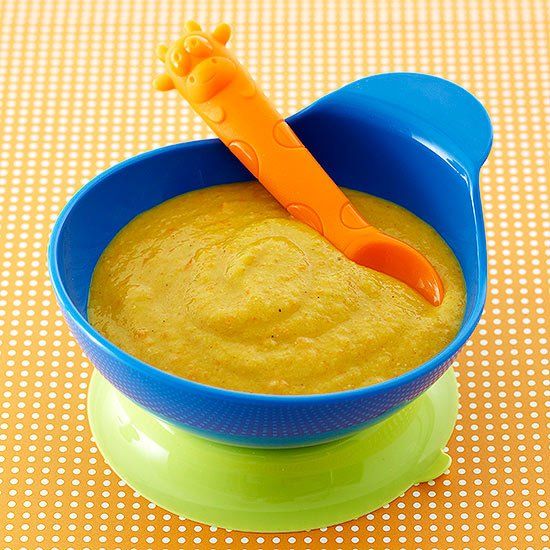 Changing up the menu broadens your baby's palate and helps to ensure good nutrition, especially when it comes to produce. (For ideas to get you started, check out these experts' suggestions for adventurous first foods.)
Changing up the menu broadens your baby's palate and helps to ensure good nutrition, especially when it comes to produce. (For ideas to get you started, check out these experts' suggestions for adventurous first foods.)
Often this means heaving ourselves out of a well-worn food rut. Stuck on sweet potatoes? Shake things up with some steamed beets. Smashed peas and carrots every night? Consider pureed brussels sprouts with a little lemon juice instead. Oat cereal overload? Try quinoa cooked in vegetable broth.
Feed your baby the necessary fats
Grocery store shelves are bursting with low-fat and nonfat products – should babies be eating these? Absolutely not. Fat is essential for babies' growth, and both breast milk and formula contain a lot of it.
Experts recommend serving babies full-fat dairy products, such as cheese and yogurt, until age 2.
But don't give your baby cow's milk to drink until after their first birthday. At that point, serve whole milk (unless the doctor tells you otherwise).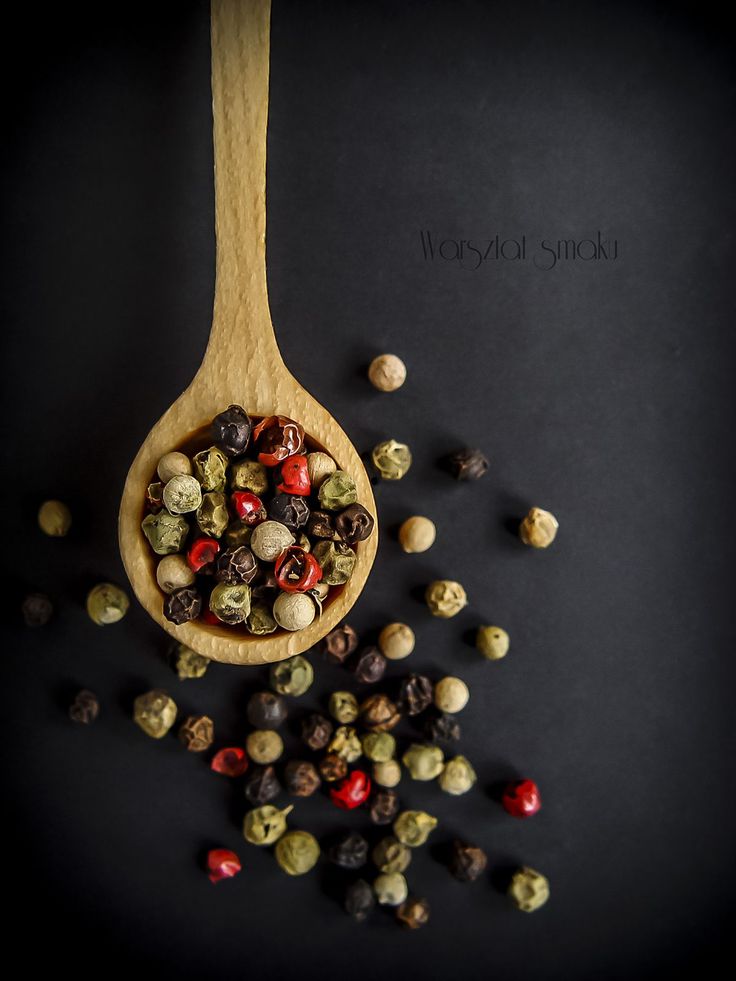
The unsaturated fat in avocado makes it another wonderful choice for your baby, and the same goes for salmon and other fatty fish because they contain essential fatty acids, including omega-3s.
Offer rejected foods again – and again
When it comes to sampling new foods, babies make harsh critics. Offer a mouthful of your famous pureed green beans with dill, and your baby may swallow it reluctantly – or spit it out and push your hand away, mouth clamped shut.
Don't force the issue. For one thing, your baby may just not be hungry. Babies' appetites fluctuate, and they need less food than many of us think.
On the other hand, your baby might be turned off by the look, smell, or taste of a food. This doesn't mean you should ban it from your table permanently. If you keep trying, your baby may begin to tolerate that new food after you expose it to them a few times.
So although it can be frustrating to watch your baby reject the food you've lovingly prepared, take a deep breath and try again another day.
Demonstrate the joy of eating
"Dining with one's friends and beloved family is certainly one of life's primal and most innocent delights," Julia Child famously said.
Enjoying your food is the most meaningful thing you can do to foster a similar appreciation in your little one. Babies watch their parents and model them, so experiment with different flavors and new foods. Let your baby see you eating and savoring lots of different healthy foods. If you enjoy the simple pleasure of eating good food, chances are your baby will too.
Unfortunately, it's also easy to become frustrated and stressed about your baby's eating habits. Their fickle appetite, your concern about whether they're eating enough, and the sheer messiness can conspire to turn feeding time into a chore – or even an outright battle.
It doesn't have to be this way. There are several things you can do to make mealtime an enjoyable experience. First, make sure you have enough time so that you aren't hurrying your baby's meals.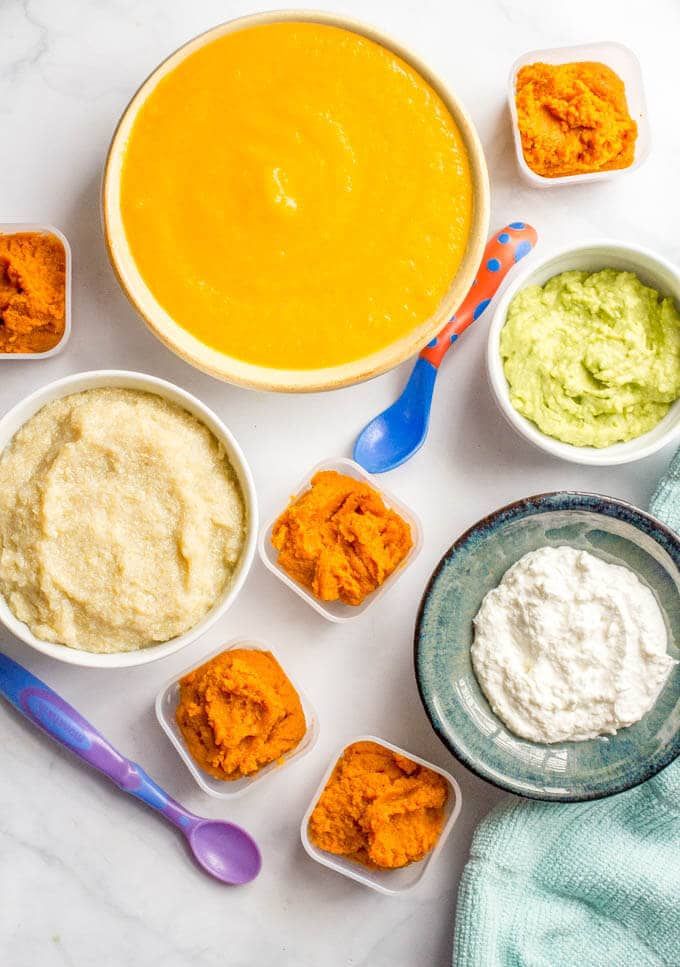 And hard as it is, accept the mess as a given – letting babies play with their food is actually good for them. They're learning about new tastes and smells while they're playing, and they're learning that eating can be fun.
And hard as it is, accept the mess as a given – letting babies play with their food is actually good for them. They're learning about new tastes and smells while they're playing, and they're learning that eating can be fun.
To make cleaning up easier, put a splat mat under your baby's highchair. On warm days, consider letting your baby dine topless to lighten your laundry load. And take comfort in knowing that everything is washable, including your baby.
advertisement | page continues below
Sitemap
- Home >
- Sitemap
- Main
- About the establishment
- News
- Attention! Measles!
- Interview with Chief Physician
- Working hours of St. Petersburg subdivisions GBUZ Polyclinic No. 88
- Attention! Bird flu!
- Licenses
- Vacancies
- Press publications
- Lean Clinic
- Volunteering
- The trade union organization of our institutions
- News
- Divisions
- Children's polyclinic branch №57
- Children's polyclinic branch №25
- Women's consultation №13
- Youth Consultation
- Polyclinic No.
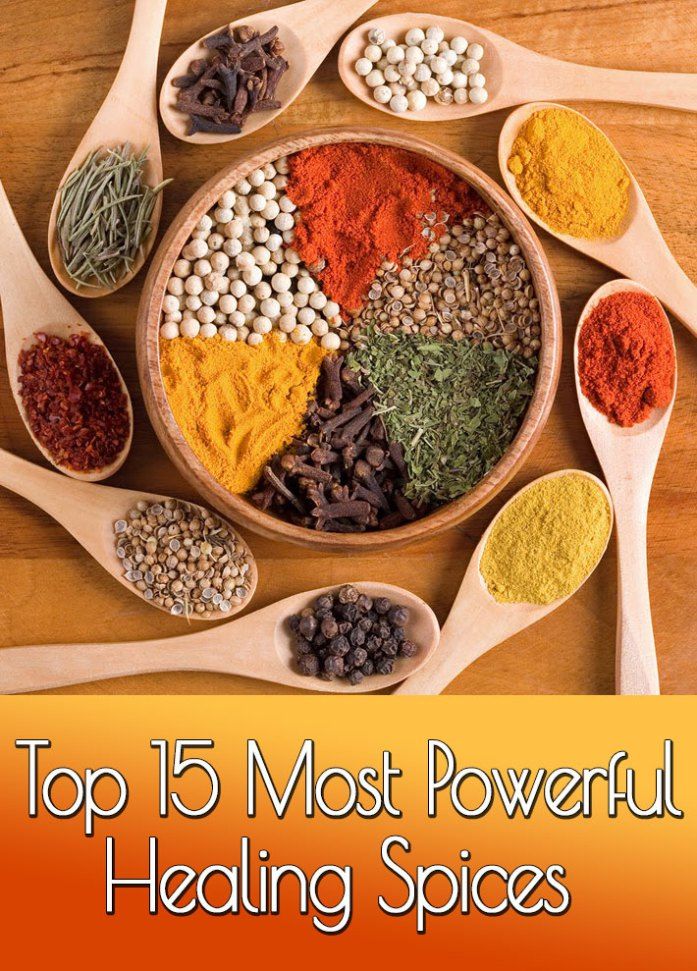 88
88 - Polyclinic department No. 45
- Emergency Department help
- Shock, definition, types. Mechanism occurrence, symptoms. First aid for trauma shock at the scene
- First aid for fainting, hypertensive crisis, heart attack, stroke bronchial asthma, hyperglycemic and hypoglycemic coma
- Hyperglycemic and hypoglycemic coma
- The concept of "acute abdomen" and tactics with him
- Department of the organization medical care for children in educational institutions (oompd in OO)
- Department of paid services
- Individual classes with a speech therapist
- Infrared sauna
- Directions
- Pregnancy management
- Hydrotherapy
- Pool
- Aerial Yoga (Antigravity)
- Gastroenterology
- Gynecology and obstetrics
- Pediatric cardiology
- Pediatric surgery
- Pediatric endocrinology
- Diagnostics and instrumental examinations
- Colposcopy
- Prenatal screening
- Radiography
- X-ray mamography
- ultrasound
- ECG
- Fluorography
- Cardiology
- Clinical Diagnostic Laboratory
- Neurology
- Neonatology
- Orthopedics
- Otorhinolaryngology
- Registration of certificates
- Ophthalmology
- Pediatrics
- Psychological assistance for adults
- Ask your question psychologist
- Psychological assistance for children and teenagers
- Ask your question psychologist
- Therapy
- Urology
- Physiotherapy
- Acupuncture
- Massage
- Baby massage
- Therapeutic exercise for children
- Surgery
- Endocrinology
- Electrical impedance mammography
- Registration of certificate 002 about / y for obtaining a license for weapons
- Prophylaxis
- Articles
- Auxiliary offices
- Reviews
- Contacts
- Write to us
- Types of medical care
- Patients
- Weight Loss School
- About the establishment
Spices and baby food.
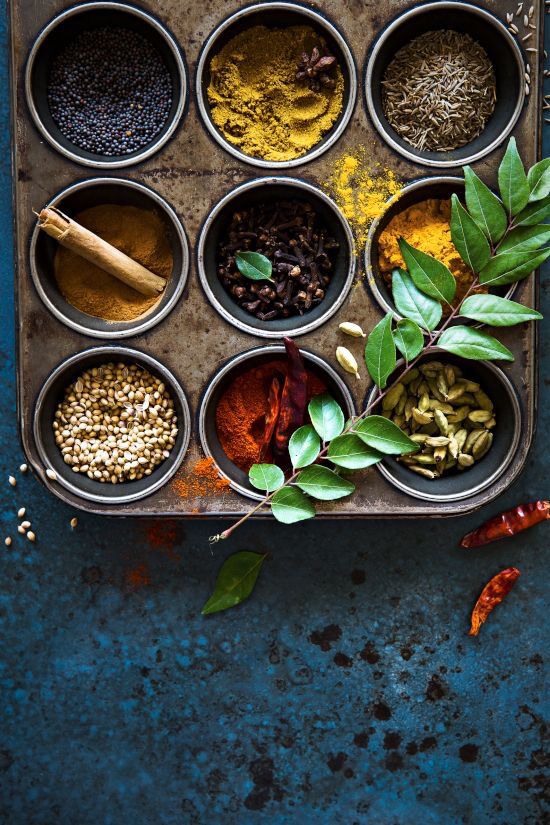 What spices can be given to children.
What spices can be given to children.
Although spicy and spicy foods are not recommended for preschoolers, spices are sometimes used in children's food. Some manufacturers of baby food add individual spices even to food for children under one year old (mild white pepper, basil, barberry). An absolute ban remains only on hot spices: black and red pepper and mustard are not used in baby food. Other spices can even have a positive effect - they excite the appetite, diversify the taste. A very small amount of this or that seasoning should be added to food.
Some spices that are recommended to add to dishes for children are listed below
Basil, an annual aromatic plant with the smell of lemon, cloves, mint, pepper, gives a wonderful aroma to meat or vegetable dishes. Basil is a great addition to pasta (various spaghetti and pasta sauces are made from it).
Everyone knows “barberry” lollipops, named after one of their constituents - barberry - red berries of the barberry bush, sour in taste.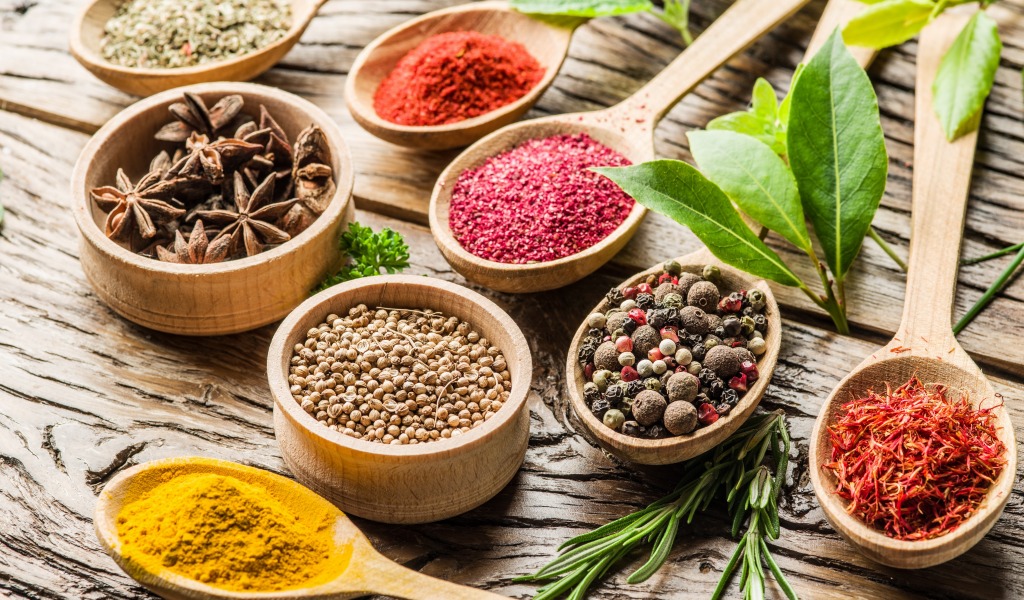 Barberry is used for cooking jam and jam, for pickling fruits, vegetables and meat, served with fried meat, poultry, and game.
Barberry is used for cooking jam and jam, for pickling fruits, vegetables and meat, served with fried meat, poultry, and game.
Widely used in baby food is such a pleasant and beloved by children spice as vanilla - the unripe fruits of one of the types of orchids. Vanilla is used in the confectionery industry, and also serves as an excellent addition to the curd mass, pancake dough, and dairy products. Vanillin is added to fermented milk drinks, puddings, ice cream and sweets.
When preparing confectionery, biscuits, as well as compote or a drink for children, you can use cloves, an aromatic spice from unblown flowers of a tropical clove tree. It is especially recommended to add cloves to various gingerbread.
Ginger is well known from early childhood for the smell of gingerbread and gingerbread. Soft drinks are also prepared with ginger - for example, ginger lemonade has a peculiar taste.
Cinnamon is well-deservedly popular. Children also eat dishes with cinnamon willingly. Cinnamon is added to confectionery products (biscuit with cinnamon), it also goes well with apples.
Cinnamon is added to confectionery products (biscuit with cinnamon), it also goes well with apples.
Turmeric (or turmeric) will add a beautiful yellow color and a peculiar, not too spicy taste to the dish. It is used as a seasoning for meat, rice, vegetables, and diluted with water in a small amount will give a bright color to mashed potatoes, pasta or cottage cheese (this can be used to decorate dishes). Bay leaf can also be used in baby food. It has a pleasant smell, improves the taste of soups, broths, second courses, marinades.
Citric acid is also widely used in cooking - a white crystalline powder prepared from lemon juice. However, for baby food, commercially prepared citric acid is not very desirable, and, if possible, it is better to replace it with fresh lemon juice.
Olives are the mature fruits of the olive tree. They are pickled and used as a side dish or to decorate sandwiches and salads. The specific taste of olives is usually not liked by children.